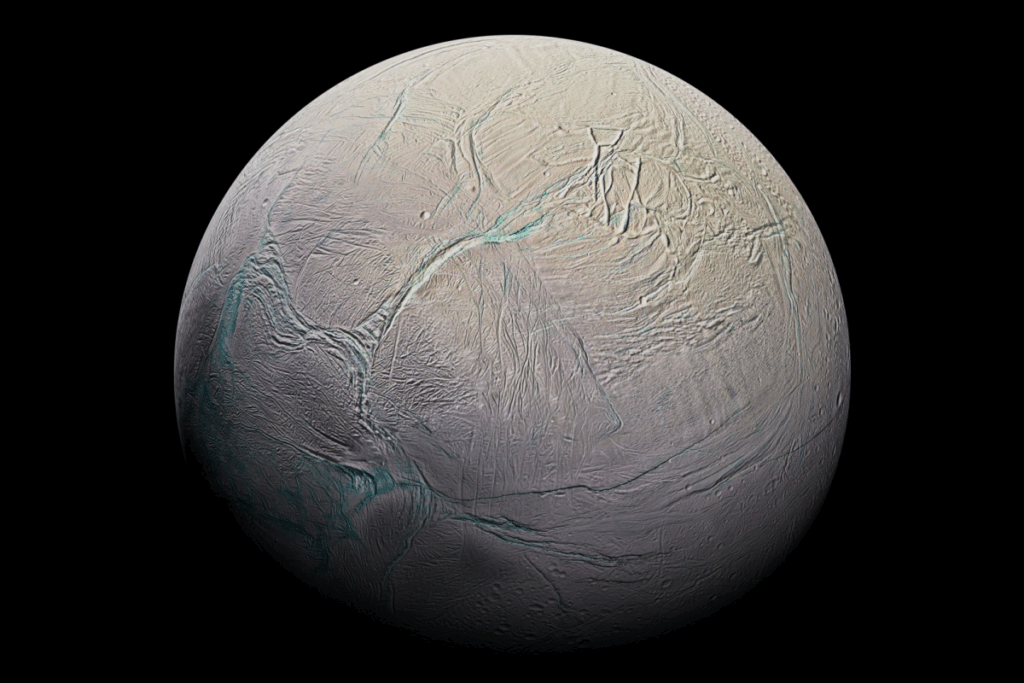Cassini’s Hidden Data Unlocks New Clues
Nearly two decades after NASA’s Cassini spacecraft completed its mission, scientists continue to extract groundbreaking discoveries from its vast dataset. The latest revelation comes from Saturn’s icy moon Enceladus, where researchers have identified new complex organic molecules spewing from its subsurface ocean. The finding, published in Nature Astronomy, strengthens the case for a dedicated European Space Agency (ESA) mission to investigate the moon more closely.
Enceladus has intrigued planetary scientists since 2005, when Cassini detected jets of water and ice grains erupting from cracks near its south pole. These plumes not only confirmed the existence of a hidden ocean beneath its frozen crust but also seeded Saturn’s E ring with icy particles. While many of these grains had aged and degraded due to space radiation, data from a 2008 flyby revealed much fresher material — pristine samples ejected just minutes earlier.
Fresh Ice Grains Reveal Hidden Molecules
During that 2008 encounter, Cassini’s Cosmic Dust Analyzer (CDA) captured high-speed impacts of ice grains traveling at about 18 kilometers per second. This unique event provided a clearer view of the molecules contained within, as the violent collisions prevented water clusters from masking weaker signals.
Analysis of these grains revealed both familiar and entirely new organic molecules, including:
- Aliphatic compounds
- Cyclic esters and alkenes
- Ethers and ethyl groups
- Nitrogen- and oxygen-bearing compounds (tentative)
On Earth, similar molecules are key players in chemical reaction chains that form biologically relevant compounds, including amino acids. The discovery confirms that Enceladus’s underground ocean is chemically active and capable of generating molecules that are precursors for life.
Implications for Habitability
The findings build on previous work showing that Enceladus possesses all the critical ingredients for habitability: liquid water, an energy source, essential chemical elements, and now complex organics. Lead researcher Nozair Khawaja explained that these molecules open multiple potential pathways toward more complex, life-supporting chemistry.
Co-author Frank Postberg emphasized that the results prove these organics are not simply artifacts of radiation weathering in space but are actively produced within the moon’s ocean. ESA project scientist Nicolas Altobelli added that the ability to make such discoveries long after Cassini’s mission demonstrates the enduring value of space exploration archives.
The Next Frontier: A Mission to Enceladus
These discoveries are fueling momentum for a future ESA mission to orbit and land on Enceladus. Proposed designs would include advanced instruments capable of flying through the plumes, analyzing freshly ejected material, and potentially sampling the surface directly.
Such a mission could answer one of humanity’s most profound questions: Is life unique to Earth, or can it emerge elsewhere given the right conditions? Even if no signs of life are found, the results would challenge current understanding of why habitability does not always translate to biology.
Enceladus now stands alongside Europa as one of the most promising locations in the solar system to search for extraterrestrial life. With every new discovery from Cassini’s treasure trove, the urgency grows to return — not just to orbit but to land and search the icy moon’s surface for answers.


